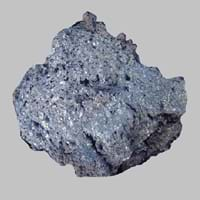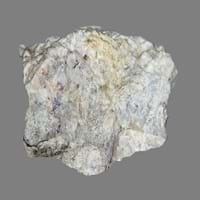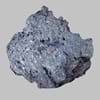Definition
Picrite is a variety of high-magnesium olivine basalt that is very rich in the mineral olivine
Skarns are formed during regional or contact metamorphism and from a variety of metasomatic processes involving fluids of magmatic, metamorphic, and/or marine origin
Origin
Hawaii Islands
USA, Australia
Discoverer
Unknown
Tornebohm
Etymology
From Greek pikros bitter + -ite, 19th century
From an old Swedish mining term originally used to describe a type of silicate gangue or waste rock.
Class
Igneous Rocks
Metamorphic Rocks
Sub-Class
Durable Rock, Hard Rock
Durable Rock, Hard Rock
Group
Volcanic
Not Applicable
Other Categories
Fine Grained Rock, Opaque Rock
Fine Grained Rock, Opaque Rock
Texture
Earthy, Rough
Earthy, Mud-rich, Rough
Color
Black, Brown, Colourless, Green, Grey, Pink, White, Yellow
Black, Brown, Colourless, Green, Grey, White
Durability
Durable
Durable
Scratch Resistant
Yes
Yes
Appearance
Rough and Shiny
Dull
Interior Uses
Countertops, Decorative Aggregates, Homes, Interior Decoration
Decorative Aggregates, Entryways, Interior Decoration
Exterior Uses
As Building Stone, As Facing Stone, Garden Decoration, Paving Stone
As Building Stone, As Facing Stone, Garden Decoration, Paving Stone
Other Architectural Uses
Curbing
Curbing
Construction Industry
As a Sintering Agent in Steel Industry to process Iron Ore, Cement Manufacture, for Road Aggregate, Manufacture of Magnesium and Dolomite Refractories, Roadstone, Used for flooring, stair treads, borders and window sills.
As a Flux in the Production of Steel and Pig Iron, As a Sintering Agent in Steel Industry to process Iron Ore, As Dimension Stone, Gold and Silver production, Manufacture of Magnesium and Dolomite Refractories
Medical Industry
Not Yet Used
Not Applicable
Antiquity Uses
Artifacts, Monuments, Sculpture
Artifacts, Monuments, Sculpture
Commercial Uses
As a Feed Additive for Livestock, As armour rock for sea walls, Metallurgical Flux, Pottery, Source of Magnesia (MgO)
Creating Artwork, Gemstone, Jewelry, Metallurgical Flux, Source of Magnesia (MgO)
Types
Oceanite
Endoskarns
Features
Host Rock for Lead
Host Rock for Lead, Zinc and Copper Deposits
Archaeological Significance
Famous Monuments
Data Not Available
Data Not Available
Famous Sculptures
Data Not Available
Data Not Available
Pictographs
Not Used
Not Used
Petroglyphs
Not Used
Not Used
Formation
Picrite is a fine-grained, hard rock which is a type of metasomatite, essentially altered basalt. It forms with or without crystallization, either below the surface as intrusive rocks or on the surface as extrusive rocks.
Due to change in environmental conditions, rocks are heated and pressurized deep inside the Earth's surface. Skarn is formed from the extreme heat caused by magma or by the intense collisions and friction of tectonic plates.
Mineral Content
Biotite, Olivine, Plagioclase, Pyrrhotite
Calcite, Enstatite, Epidote, Garnet, Magnetite, Pyroxene, Titanite
Compound Content
Al, CaO, Carbon Dioxide, Mg, MgO
Au, CaO, Carbon Dioxide, Cu, Fe, MgO
Types of Metamorphism
Burial Metamorphism, Cataclastic Metamorphism, Impact Metamorphism, Regional Metamorphism
Burial Metamorphism, Cataclastic Metamorphism, Contact Metamorphism, Hydrothermal Metamorphism, Impact Metamorphism, Regional Metamorphism
Types of Weathering
Biological Weathering
Not Applicable
Types of Erosion
Chemical Erosion, Coastal Erosion, Glacier Erosion, Sea Erosion, Water Erosion, Wind Erosion
Not Applicable
Grain Size
Fine Grained
Fine Grained
Fracture
Uneven
Irregular
Streak
White, Greenish White or Grey
Light to dark brown
Porosity
Less Porous
Less Porous
Luster
Subvitreous to Dull
Waxy and Dull
Compressive Strength
Not Available
Specific Gravity
2.75-2.92
2.86
Transparency
Opaque
Opaque
Density
1.5-2.5 g/cm3
2.8-2.9 g/cm3
Resistance
Heat Resistant
Heat Resistant
Deposits in Eastern Continents
Asia
India, Russia
China, India, Russia, Saudi Arabia, South Korea, Sri Lanka
Africa
South Africa
South Africa, Western Africa
Europe
Iceland
United Kingdom
Others
Not Yet Found
Not Yet Found
Deposits in Western Continents
North America
Canada, USA
Canada
South America
Brazil
Brazil, Colombia, Paraguay
Deposits in Oceania Continent
Australia
Not Yet Found
Central Australia, Western Australia
Picrite vs Skarn Characteristics
Though some rocks look identical, they have certain characteristics which distinguish them from others. Characteristics of rocks include texture, appearance, color, fracture, streak, hardness etc. Picrite vs Skarn characteristics assist us to distinguish and recognize rocks. Also you can check about Properties of Picrite and Properties of Skarn. Learn more about Picrite vs Skarn in the next section. The interior uses of Picrite include Countertops, Decorative aggregates, Homes and Interior decoration whereas the interior uses of Skarn include Decorative aggregates, Entryways and Interior decoration. Due to some exceptional properties of Picrite and Skarn, they have various applications in construction industry. The uses of Picrite in construction industry include As a sintering agent in steel industry to process iron ore, Cement manufacture, For road aggregate, Manufacture of magnesium and dolomite refractories, Roadstone, Used for flooring, stair treads, borders and window sills. and that of Skarn include As a flux in the production of steel and pig iron, As a sintering agent in steel industry to process iron ore, As dimension stone, Gold and silver production, Manufacture of magnesium and dolomite refractories.
More about Picrite and Skarn
Here you can know more about Picrite and Skarn. The life cycle of a rock consists of formation of rock, composition of rock and transformation of rock. The composition of Picrite and Skarn consists of mineral content and compound content. The mineral content of Picrite includes Biotite, Olivine, Plagioclase, Pyrrhotite and mineral content of Skarn includes Calcite, Enstatite, Epidote, Garnet, Magnetite, Pyroxene, Titanite. You can also check out the list of all Igneous Rocks. When we have to compare Picrite vs Skarn, the texture, color and appearance plays an important role in determining the type of rock. Picrite is available in black, brown, colourless, green, grey, pink, white, yellow colors whereas, Skarn is available in black, brown, colourless, green, grey, white colors. Appearance of Picrite is Rough and Shiny and that of Skarn is Dull. Properties of rock is another aspect for Picrite vs Skarn. The hardness of Picrite is 6.8 and that of Skarn is 6.5. The types of Picrite are Oceanite whereas types of Skarn are Endoskarns. Streak of rock is the color of powder produced when it is dragged across an unweathered surface. The streak of Picrite is white, greenish white or grey while that of Skarn is light to dark brown. The specific heat capacity of Picrite is 0.88 kJ/Kg K and that of Skarn is 0.92 kJ/Kg K. Depending on the properties like hardness, toughness, specific heat capacity, porosity etc., rocks are resistant to heat, wear, impact, etc.Picrite is heat resistant whereas Skarn is heat resistant.





